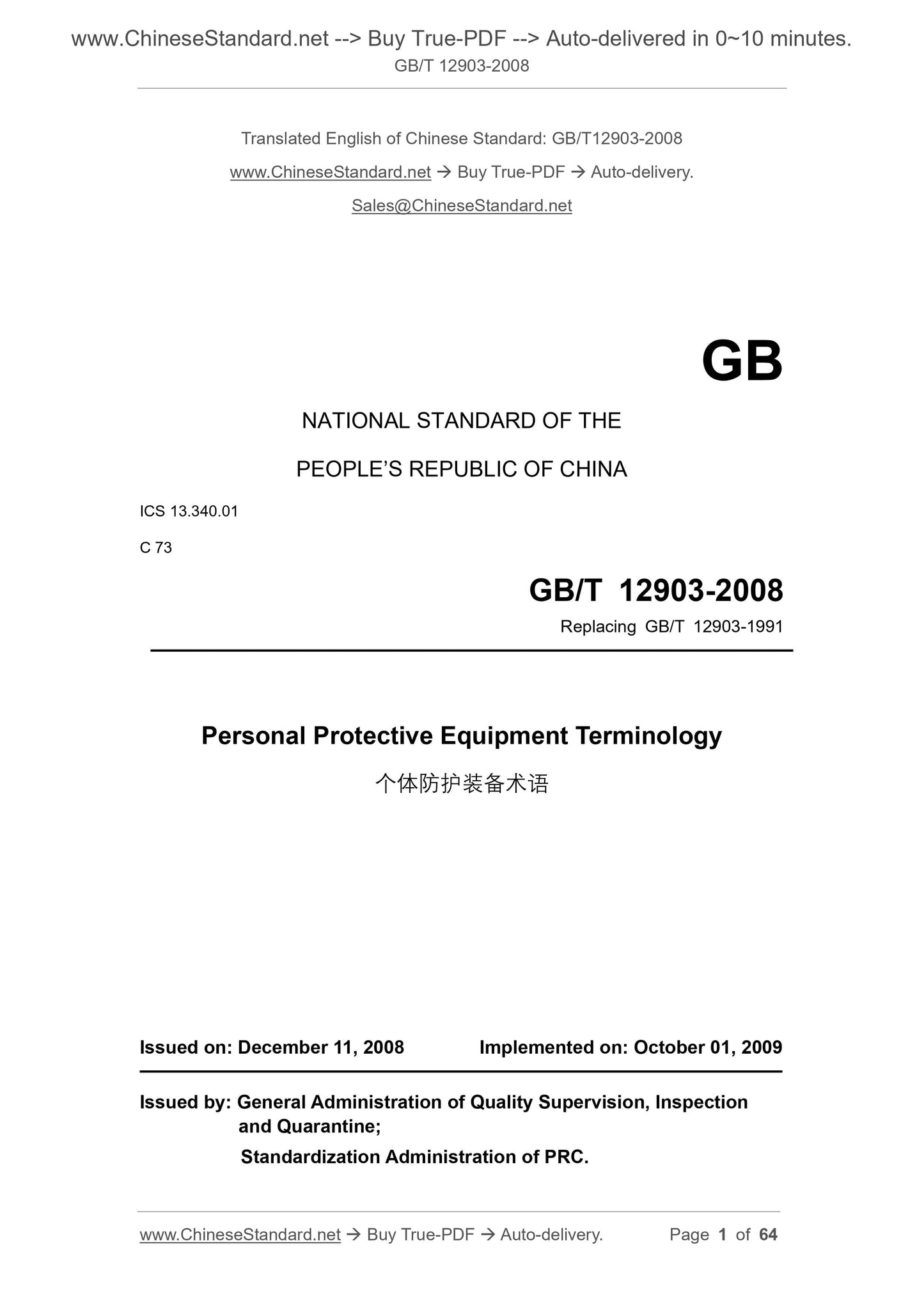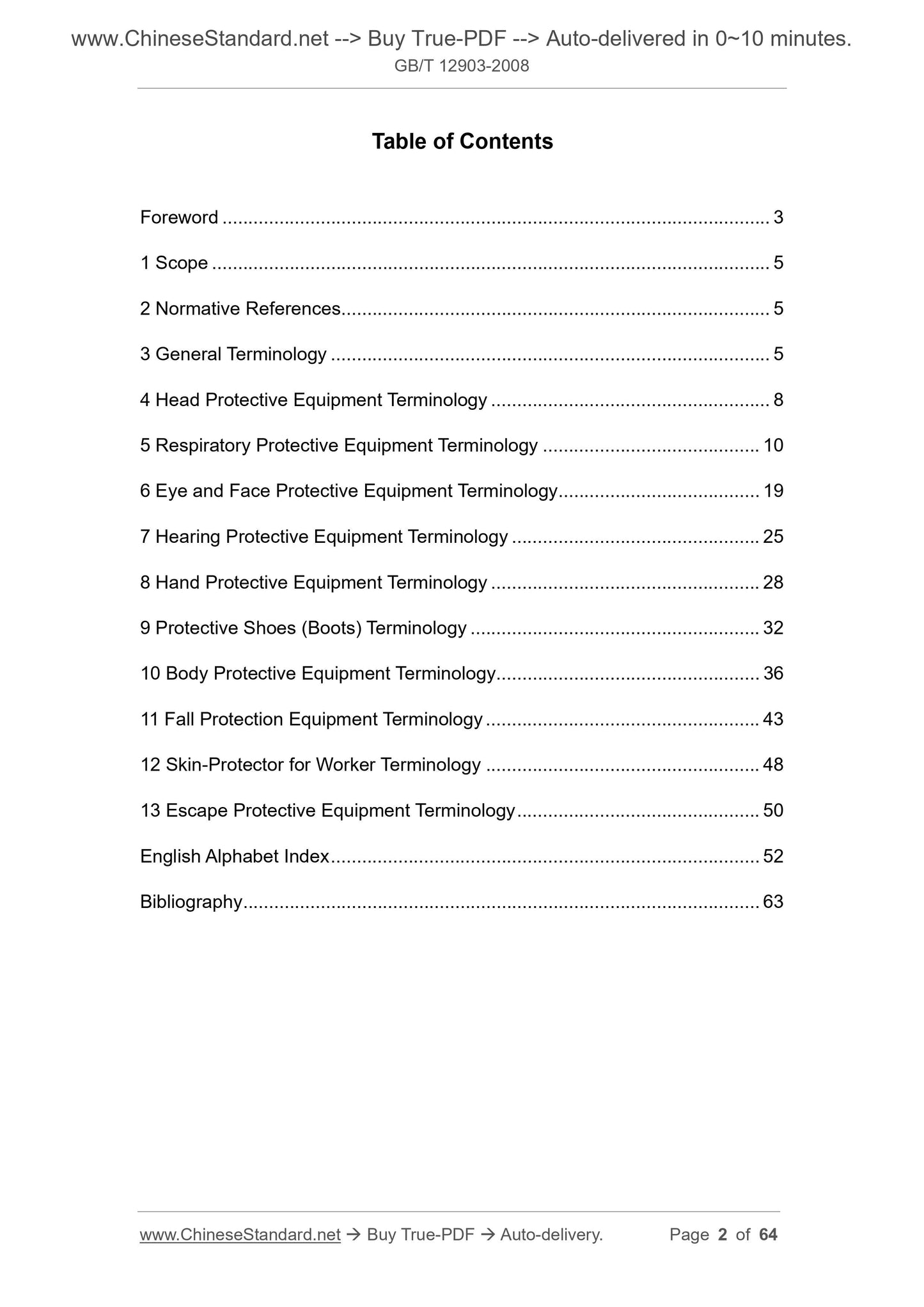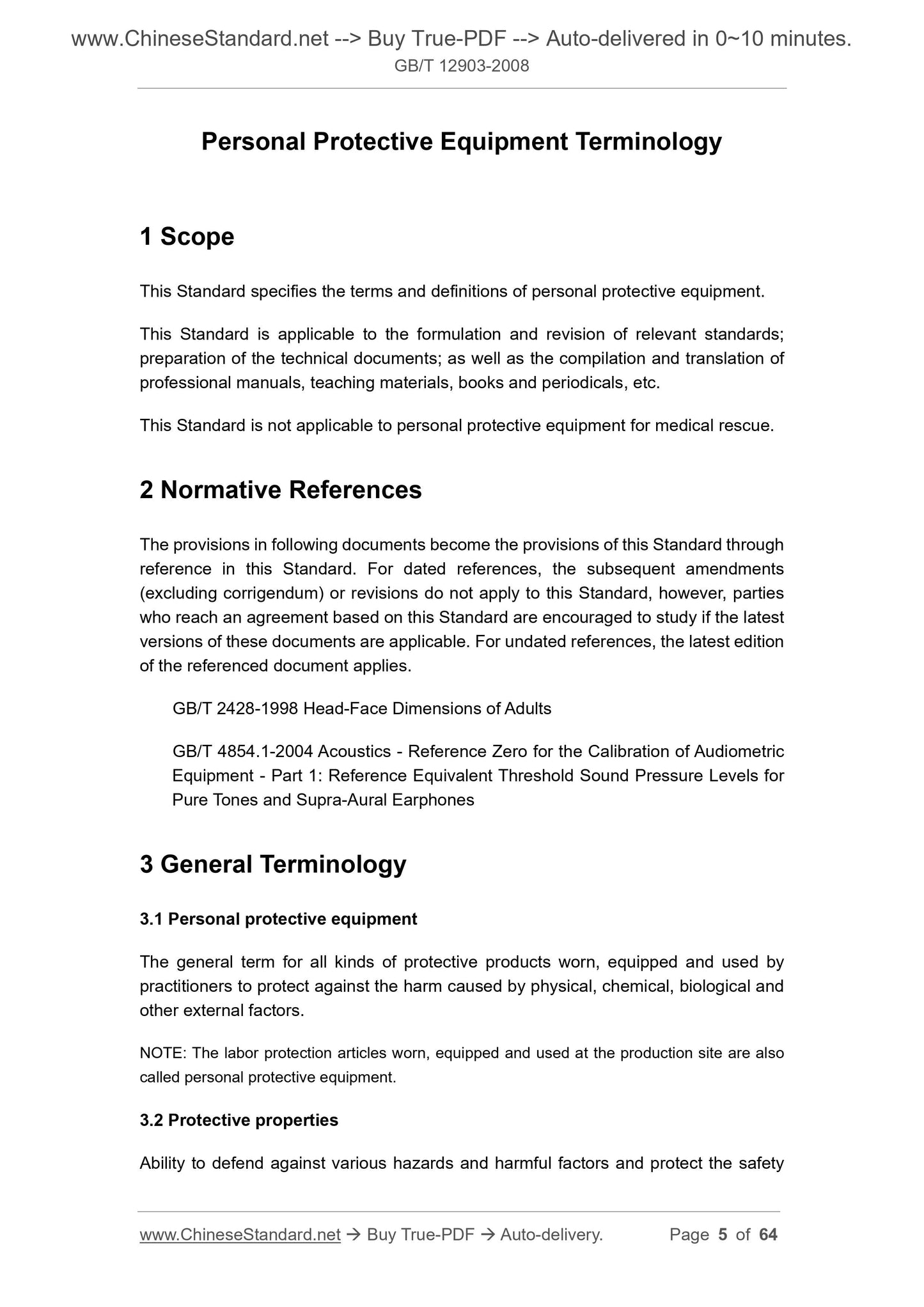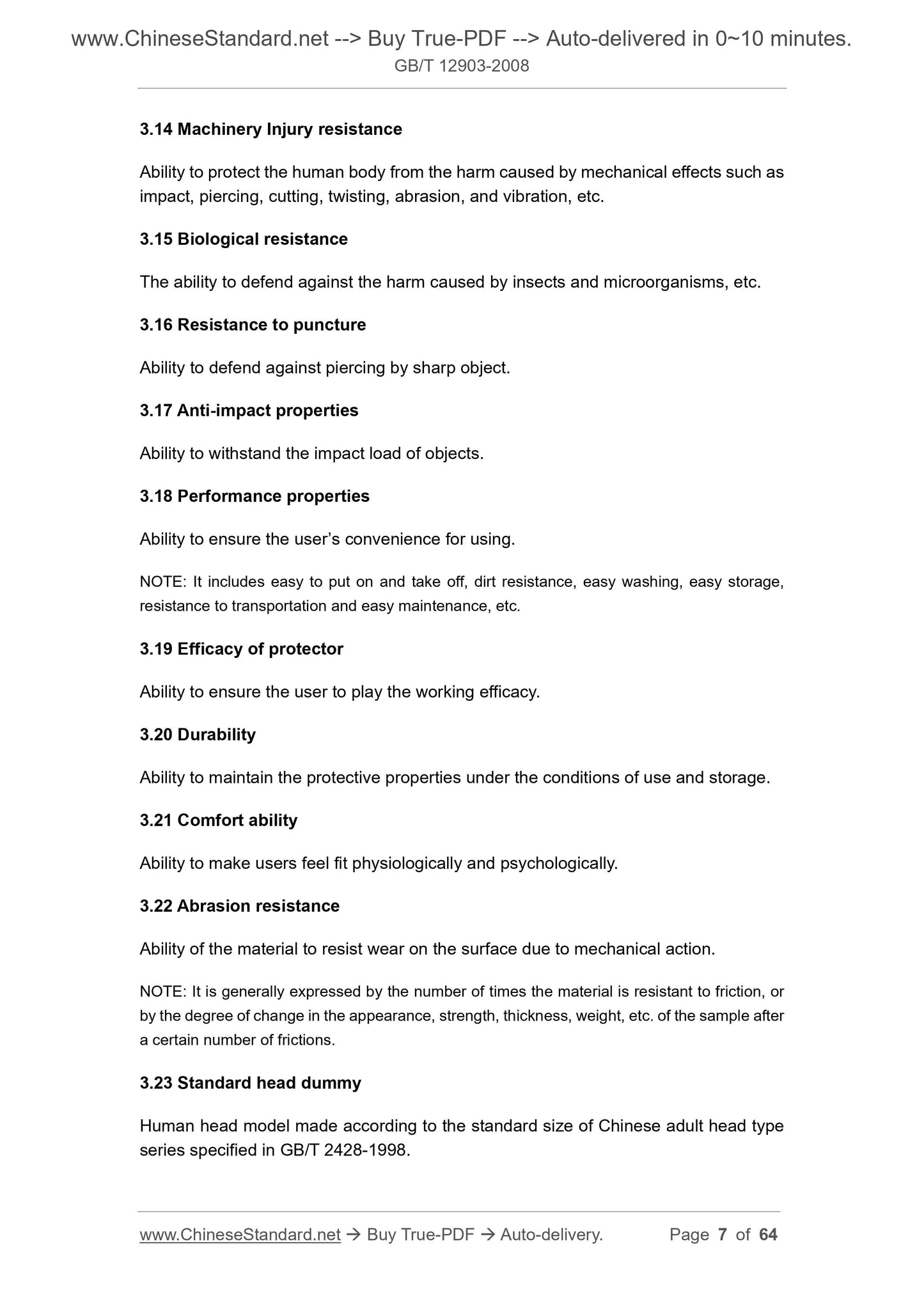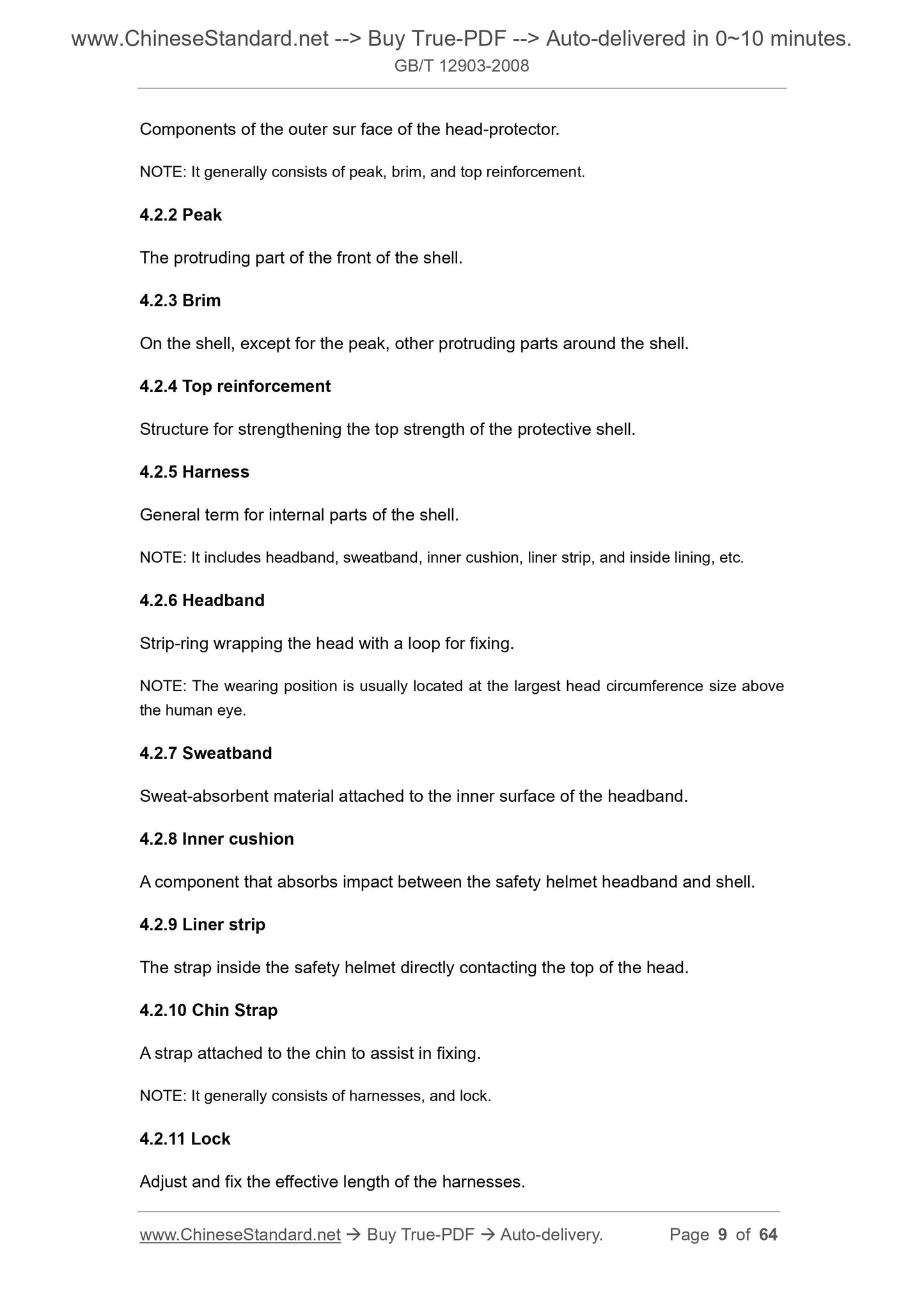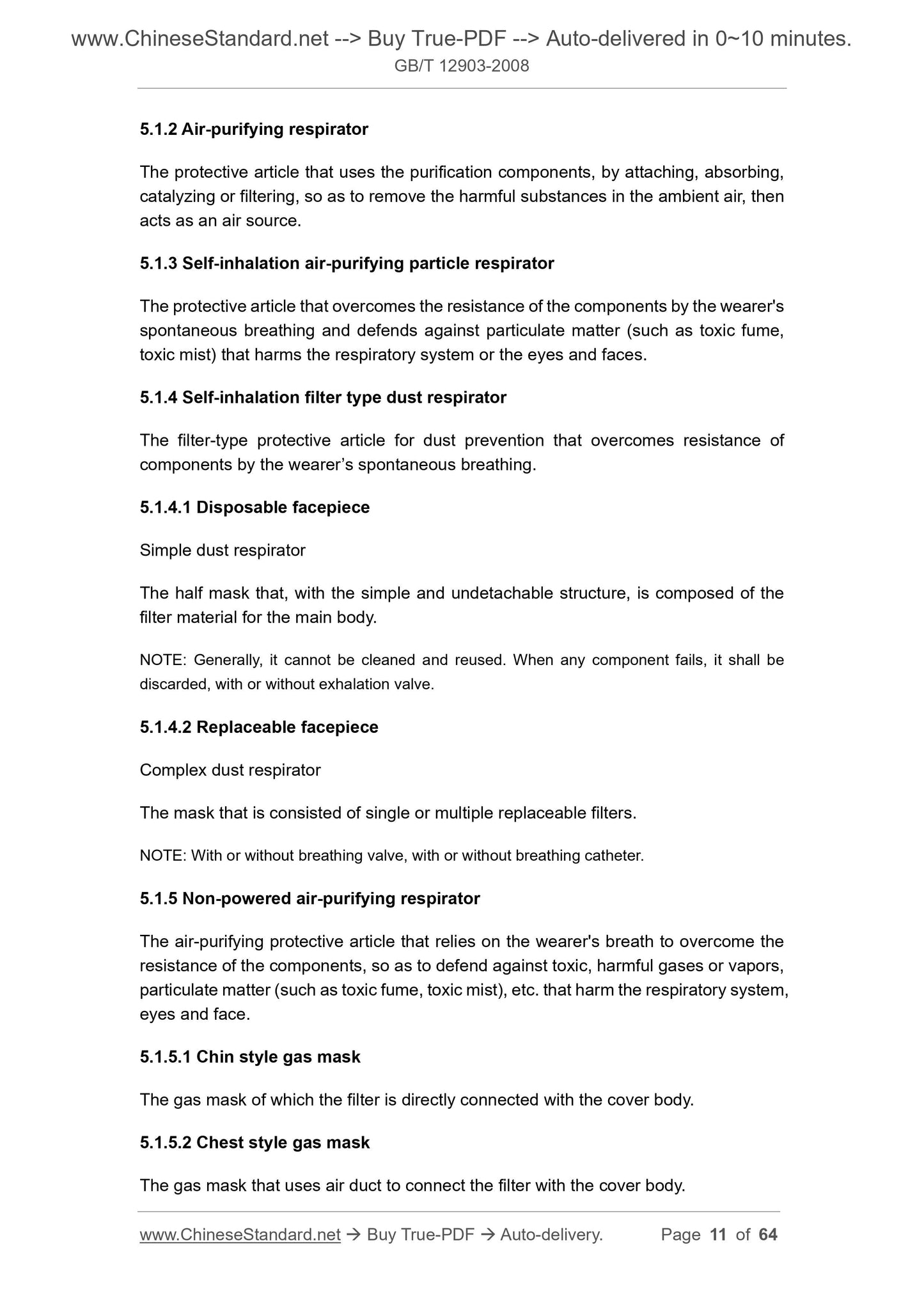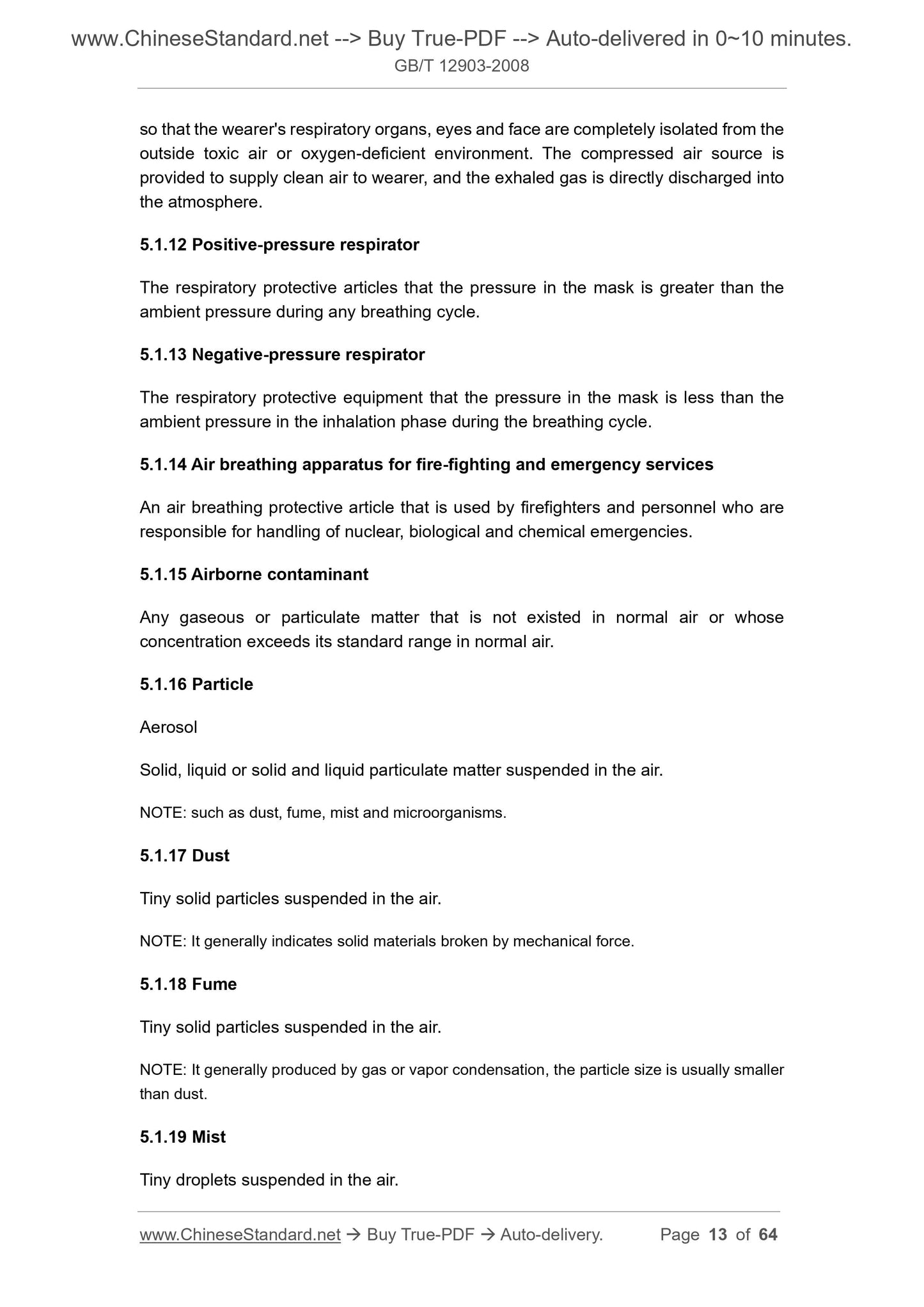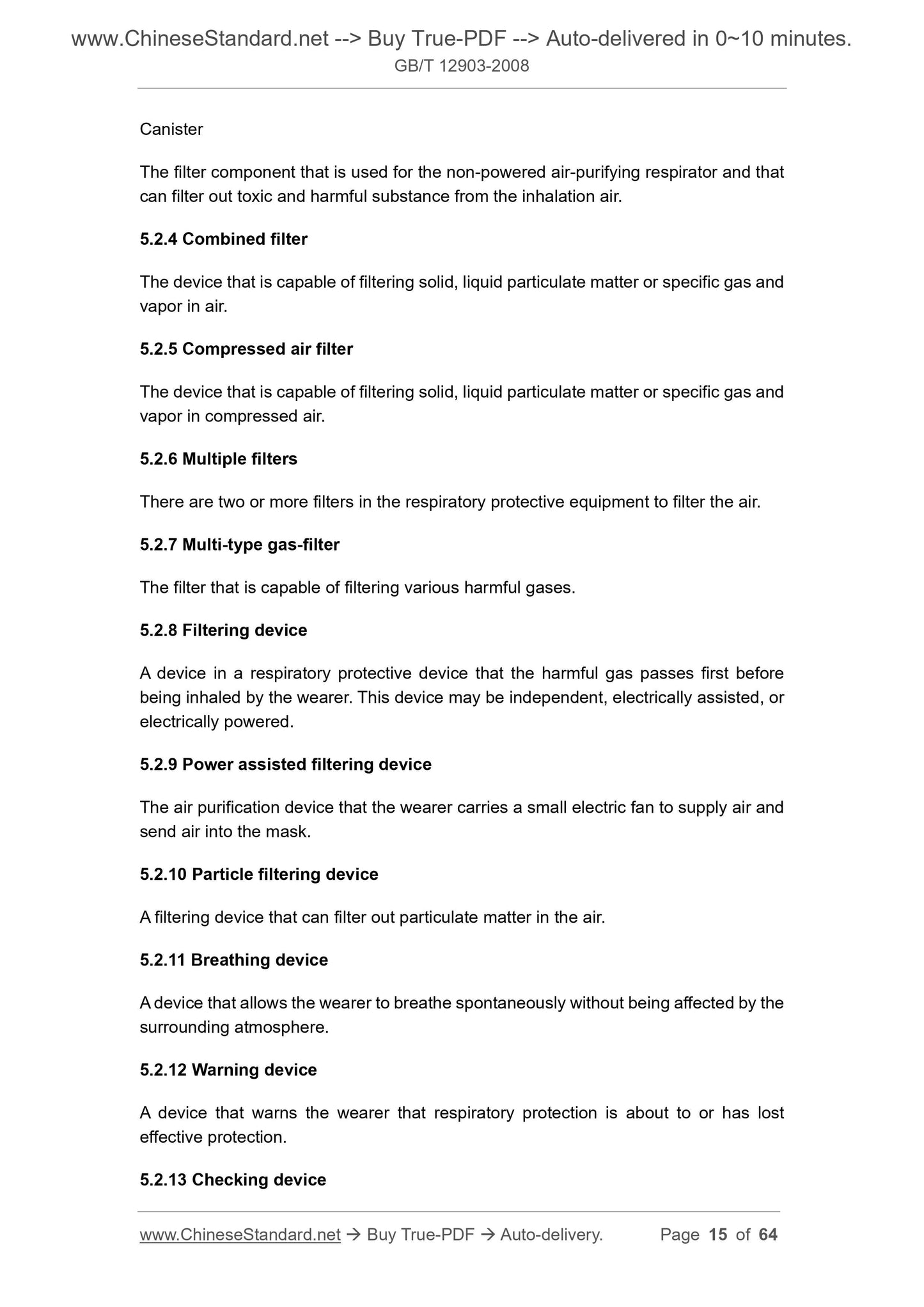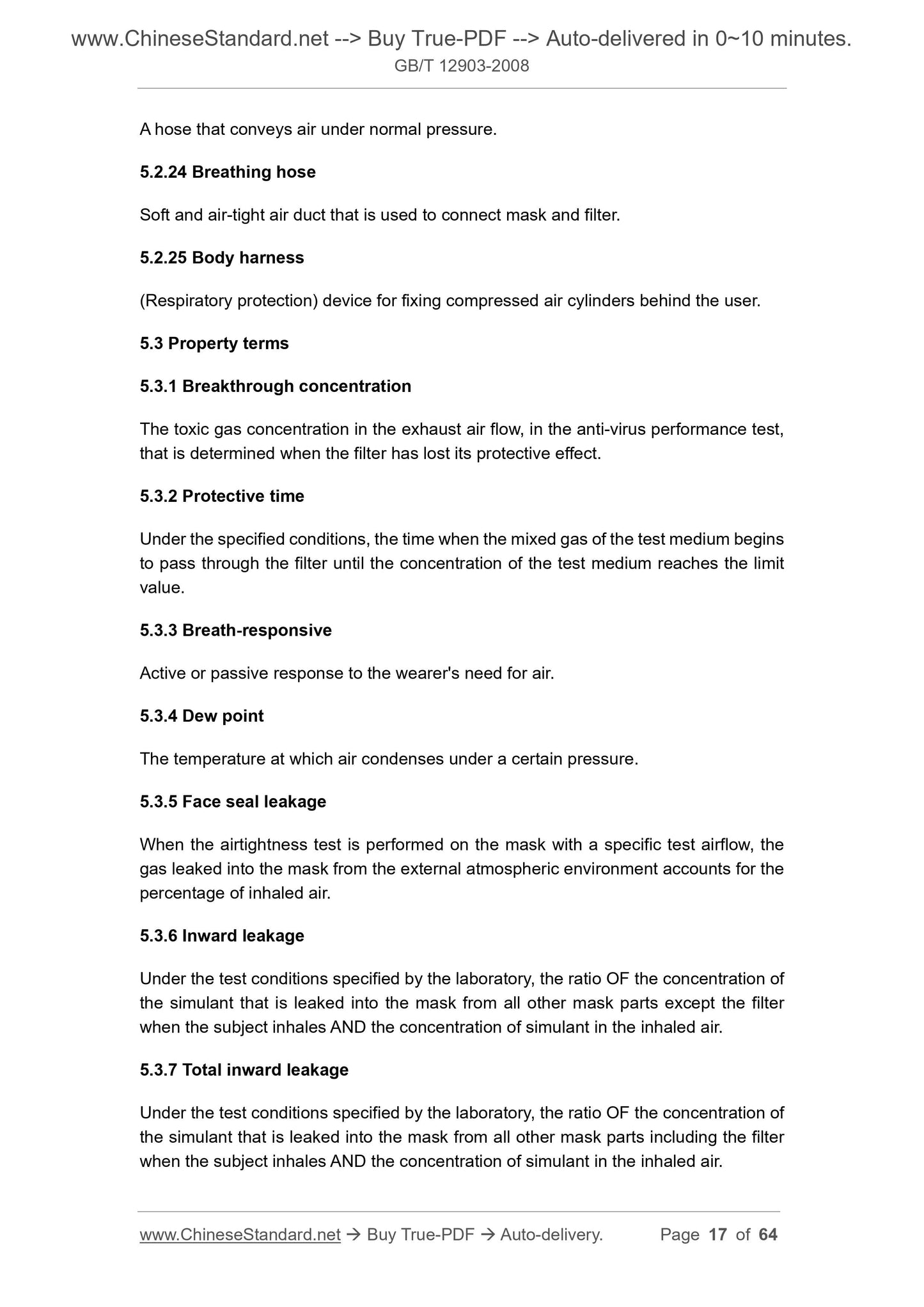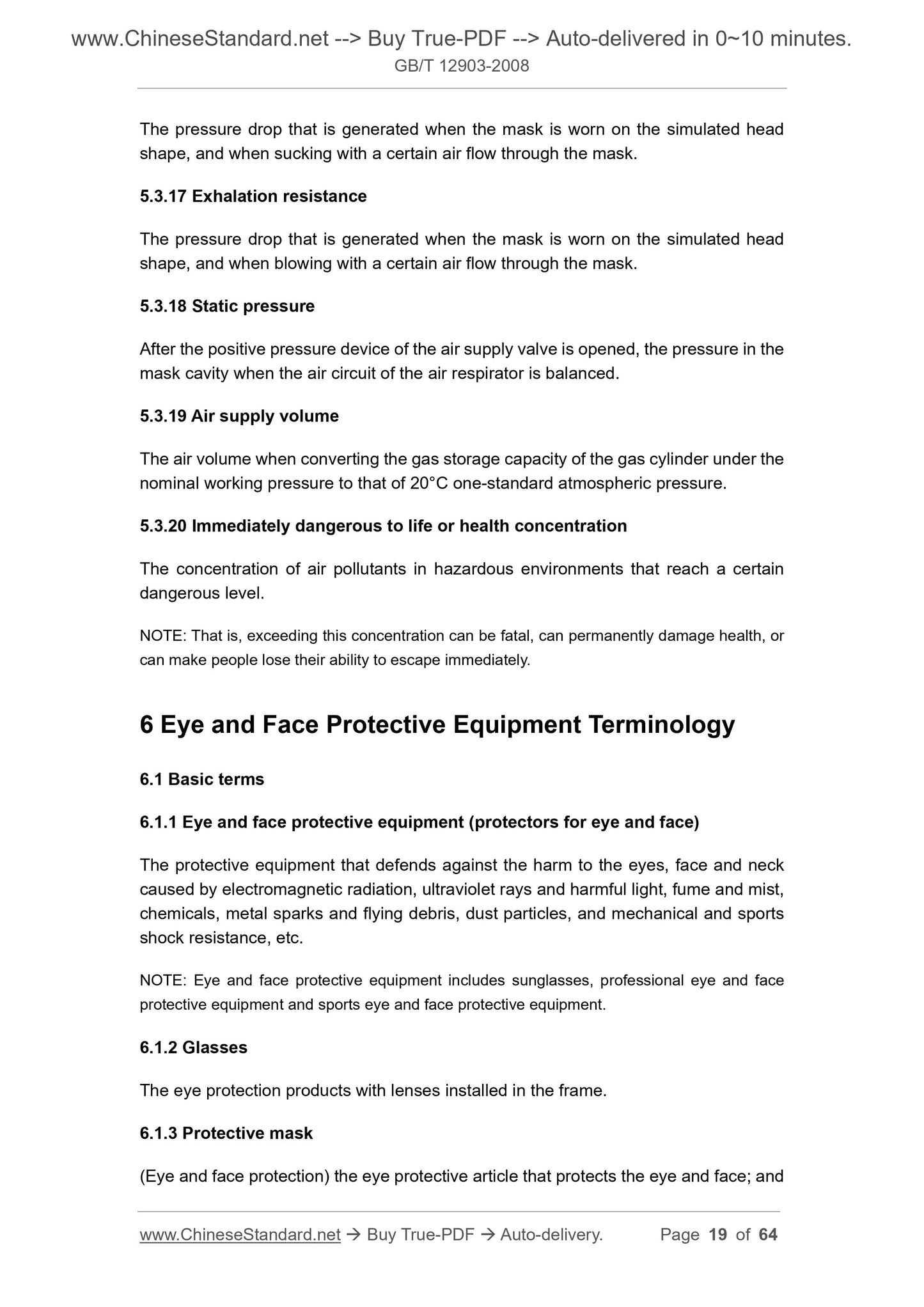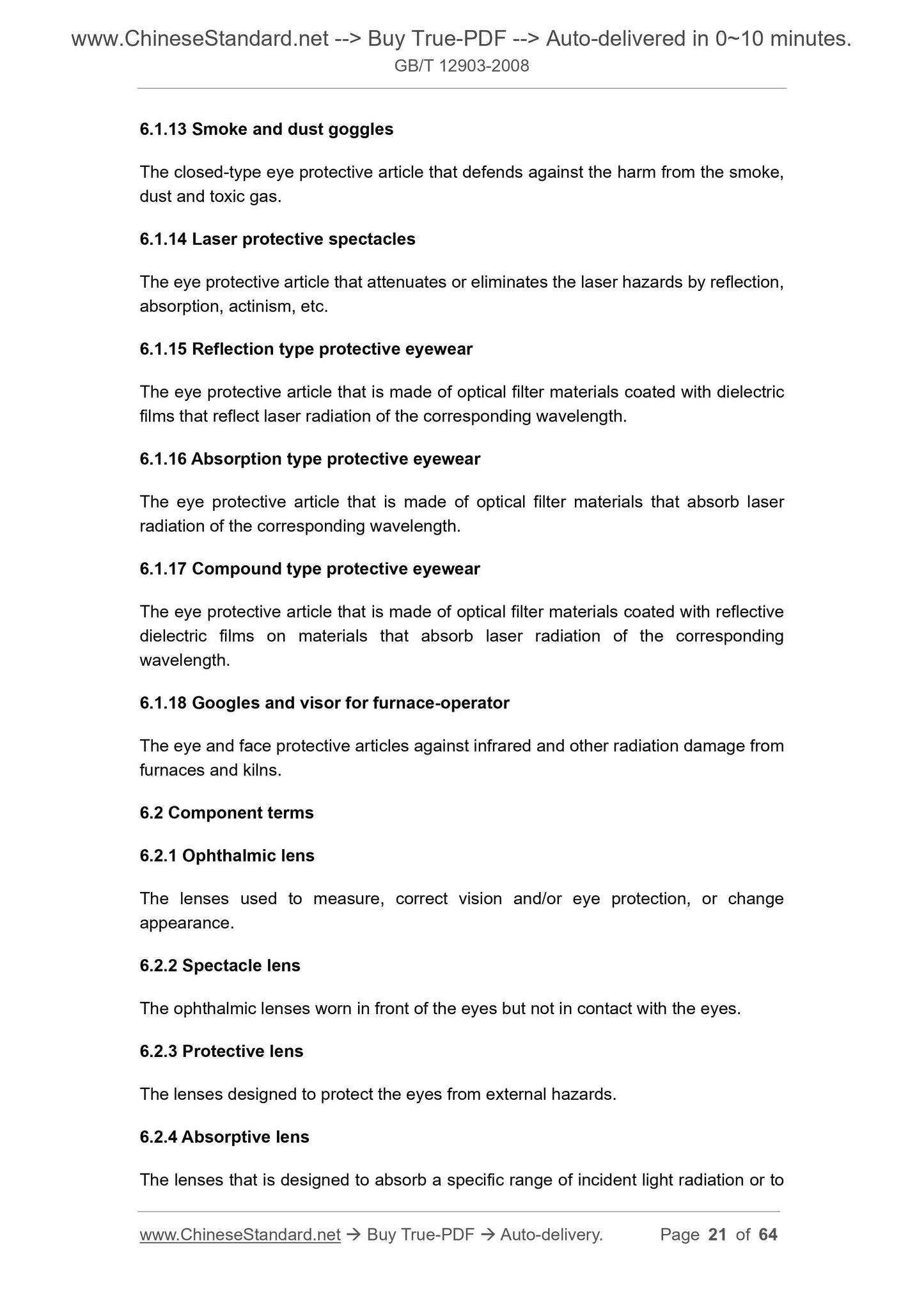1
/
of
12
www.ChineseStandard.us -- Field Test Asia Pte. Ltd.
GB/T 12903-2008 English PDF (GB/T12903-2008)
GB/T 12903-2008 English PDF (GB/T12903-2008)
Regular price
$500.00
Regular price
Sale price
$500.00
Unit price
/
per
Shipping calculated at checkout.
Couldn't load pickup availability
GB/T 12903-2008: Personal Protective Equipment Terminology
Delivery: 9 seconds. Download (and Email) true-PDF + Invoice.Get Quotation: Click GB/T 12903-2008 (Self-service in 1-minute)
Newer / historical versions: GB/T 12903-2008
Preview True-PDF
Scope
This Standard specifies the terms and definitions of personal protective equipment.This Standard is applicable to the formulation and revision of relevant standards;
preparation of the technical documents; as well as the compilation and translation of
professional manuals, teaching materials, books and periodicals, etc.
This Standard is not applicable to personal protective equipment for medical rescue.
Basic Data
| Standard ID | GB/T 12903-2008 (GB/T12903-2008) |
| Description (Translated English) | Personal Protective Equipment Terminology |
| Sector / Industry | National Standard (Recommended) |
| Classification of Chinese Standard | C73 |
| Classification of International Standard | 13.340.01 |
| Word Count Estimation | 41,423 |
| Date of Issue | 2008-12-11 |
| Date of Implementation | 2009-10-01 |
| Older Standard (superseded by this standard) | GB/T 12903-1991 |
| Quoted Standard | GB/T 2428-1998; GB/T 4854.1-2004 |
| Regulation (derived from) | National Standard Approval Announcement 2008 No.19 (Total No.132) |
| Issuing agency(ies) | General Administration of Quality Supervision, Inspection and Quarantine of the People's Republic of China, Standardization Administration of the People's Republic of China |
| Summary | This standard specifies the terms and definitions of individual protective equipment. This standard is applicable to the standard system, preparation of amendments to the technical documentation, professional manuals, materials, books and other writing and translation. This standard does not apply to medical assistance with personal protective equipment. |
Share
